Discover the Authentic Flavors of Costa Rica: A Guide to Soda Restaurants
Costa Rica is a paradise, not only for its stunning landscapes and vibrant biodiversity but also for its rich culinary traditions. Among the most cherished culinary experiences in Costa Rica are the “soda” restaurants. These small, family-owned eateries offer a unique glimpse into the heart of Costa Rican culture. In this blog post, we’ll explore what makes soda restaurants so special and why they should be on your must-visit list. Plus, we’ll connect this delightful experience with your stay at Vayu Retreat Villas, one of the best boutique hotels in Costa Rica.
Related: Everything You NEED to Know About Renting a Car in Costa Rica
What are Soda Restaurants?
Soda restaurants are the backbone of Costa Rican dining culture. They are typically small, informal establishments that serve traditional Costa Rican dishes. The term “soda” might sound unusual, but it is synonymous with homestyle cooking and warm hospitality. These eateries have been around for decades, providing locals and tourists alike with hearty meals at affordable prices.

A visit to a soda restaurant is a culinary journey into the flavours of Costa Rica. Can you go to them? Absolutely. The only things you need to know are:
- They probably won’t speak English.
- They probably won’t take credit cards.
- You definitely can’t request “gluten-free.”
- And they probably don’t serve booze. But if they do serve booze, it’s going to be beer.
Why Visit a Soda Restaurant?
They’re definitely worth popping by for lunch, one day—at least to check out an important piece of the real Costa Rica culture.
Authentic Experience
Eating at a soda restaurant offers an authentic Costa Rican experience. The dishes are prepared with traditional recipes passed down through generations. Consequently, this gives you a true taste of the local cuisine.
Affordability
Sodas are known for their affordable prices, making them a popular choice for both locals and tourists. Therefore, you can enjoy a delicious, satisfying meal without breaking the bank.
Interaction with Locals
Soda restaurants are often frequented by locals. This provides a great opportunity to immerse yourself in the community and meet friendly Costa Ricans. Additionally, this interaction can enrich your travel experience and provide insights into local life.

Supporting Local Economies
By dining at soda restaurants, you are directly supporting local families and economies. These small businesses rely on both local patrons and tourists to thrive. Your visit helps sustain their livelihood.
Popular Dishes in Soda Restaurants
Costa Rican cuisine is diverse and flavourful. Here are some must-try dishes when you visit a soda restaurant:
Gallo Pinto: $2 to $4
- Gallo Pinto is the go-to breakfast for most Costa Ricans. This dish is a delightful mixture of rice, beans, onions, and peppers, enhanced with a splash of Costa Rica’s traditional Lizano sauce. It’s typically served with scrambled eggs and a slice of queso fresco, a fresh, white cheese.
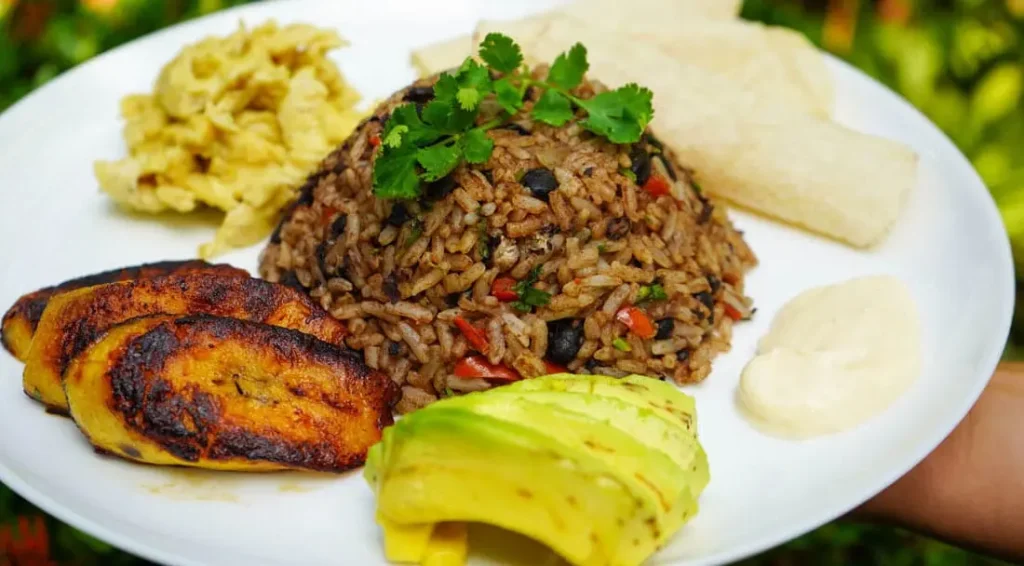
Casado: $4 to $7
- Casado is a cornerstone of the Costa Rican diet. This dish includes a choice of meat such as a pork chop, steak, chicken breast, or tilapia filet, all cooked to order. It’s served with rice, beans, fried plantains or fried cassava, and a salad. Depending on the region, the sides can vary: in Heredia, you might find casados accompanied by spaghetti, while in the Caribbean, patacones (fried green plantains) are a common side.
Olla de Carne: $4 to $5
- Olla de Carne is a traditional favourite, especially popular as the Sunday special, or plato del día. This hearty beef stew features root vegetables like cassava, potatoes, carrots, and yams, along with corn, cabbage, and other locally influenced ingredients. It’s typically served with a side of rice and a squeeze of lime.
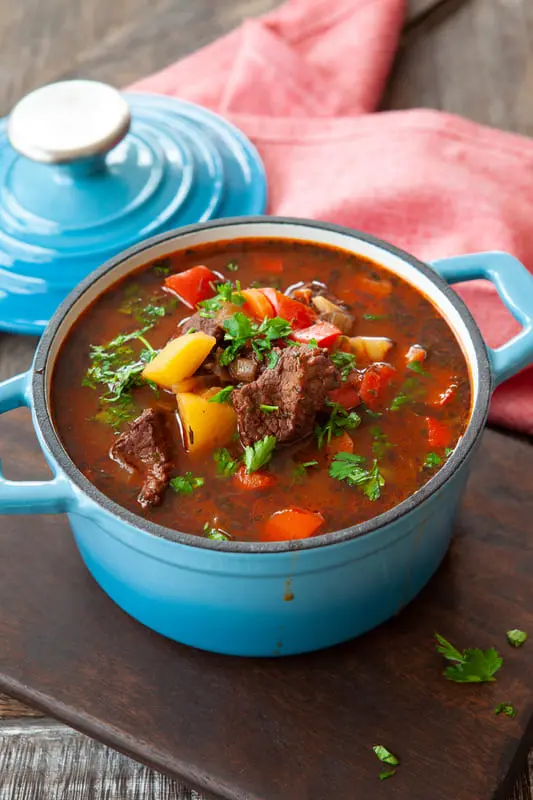
Arroz con Pollo: $4 to $6
- Arroz con Pollo is a simple yet hearty dish of fried rice with chicken, peppers, onions, and various other ingredients depending on the chef’s choice. It’s often served with a side of French fries, adhering to the Costa Rican way of enjoying this meal.
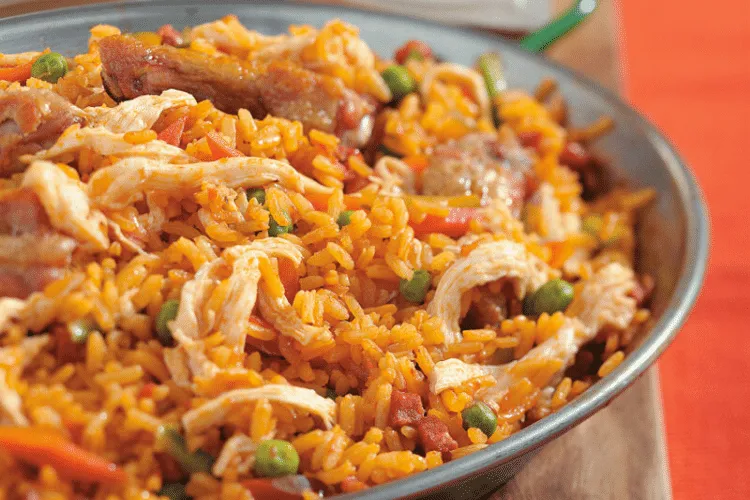
Empanadas: $0.75
- Empanadas are the crown jewels of Costa Rican fast food. These thick, fried, folded corn tortillas are stuffed with a variety of fillings, including chicken, beef, pork, cheese, and beans. You’ll find them sold on street corners, under heat lamps at bus stations, and, of course, at your local soda.
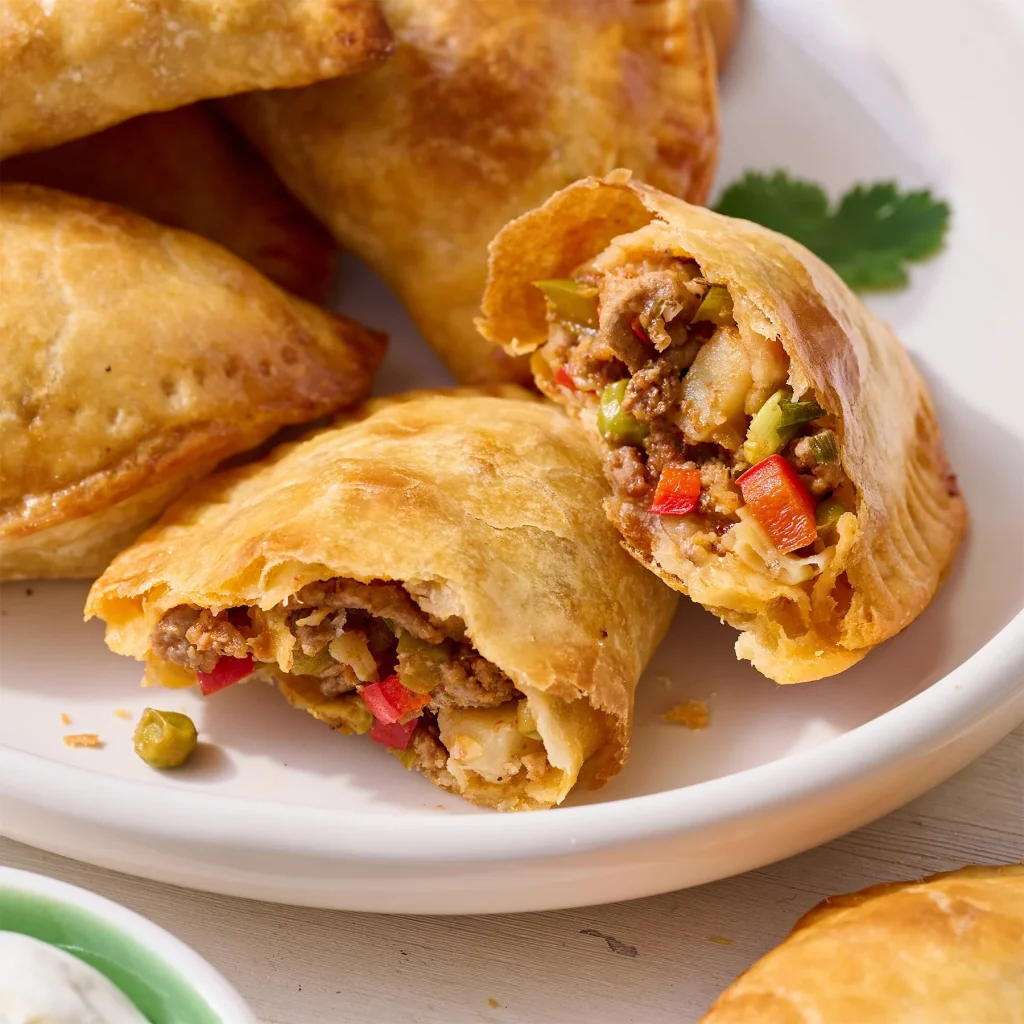
Often vegetarian and vegan options are also available in many sodas, with dishes like rice and beans, vegetable stews, and salads.
Related: Want to know where else to dine while in Uvita? Check out our post on the Top Spots
Finding the Best Soda Restaurants
Soda restaurants can be found throughout Costa Rica, from bustling cities to tranquil rural towns. Here are some tips for finding the best sodas:
- Ask Locals: The best way to find a great soda is to ask locals for recommendations. They often know the hidden gems that serve the most authentic and delicious food.
- Explore Different Regions: Different regions of Costa Rica have their own culinary specialties. Explore various areas to experience a wide range of flavours.
- Look for Busy Places: A busy soda is usually a good sign of great food. If you see a lot of locals dining at a particular soda, it’s likely worth a visit.
Connecting Your Stay with Culinary Delights
Staying at Vayu Retreat Villas, one of the best resorts in Costa Rica, enhances your culinary adventure. Located in the heart of the Costa Rican jungle, Vayu Retreat Villas offers luxurious accommodations and top-notch amenities. While you enjoy the exquisite dining options at Vayu, taking a break to visit a local soda restaurant provides a refreshing change of pace.
Exploring the local sodas around Vayu Retreat Villas allows you to experience the true essence of Costa Rican cuisine and culture. It’s a delightful complement to the fine dining experiences at your boutique hotel, making your stay even more memorable. Moreover, visiting a soda is more than just enjoying a meal; it’s about immersing yourself in the local way of life. These small, family-run restaurants play a crucial role in supporting the local economy. Every meal you purchase at a soda helps sustain a family business and keeps local culinary traditions alive. This is a meaningful way to contribute to the community and ensure that these beloved eateries continue to thrive.

BONUS: Gallo Pinto Recipe
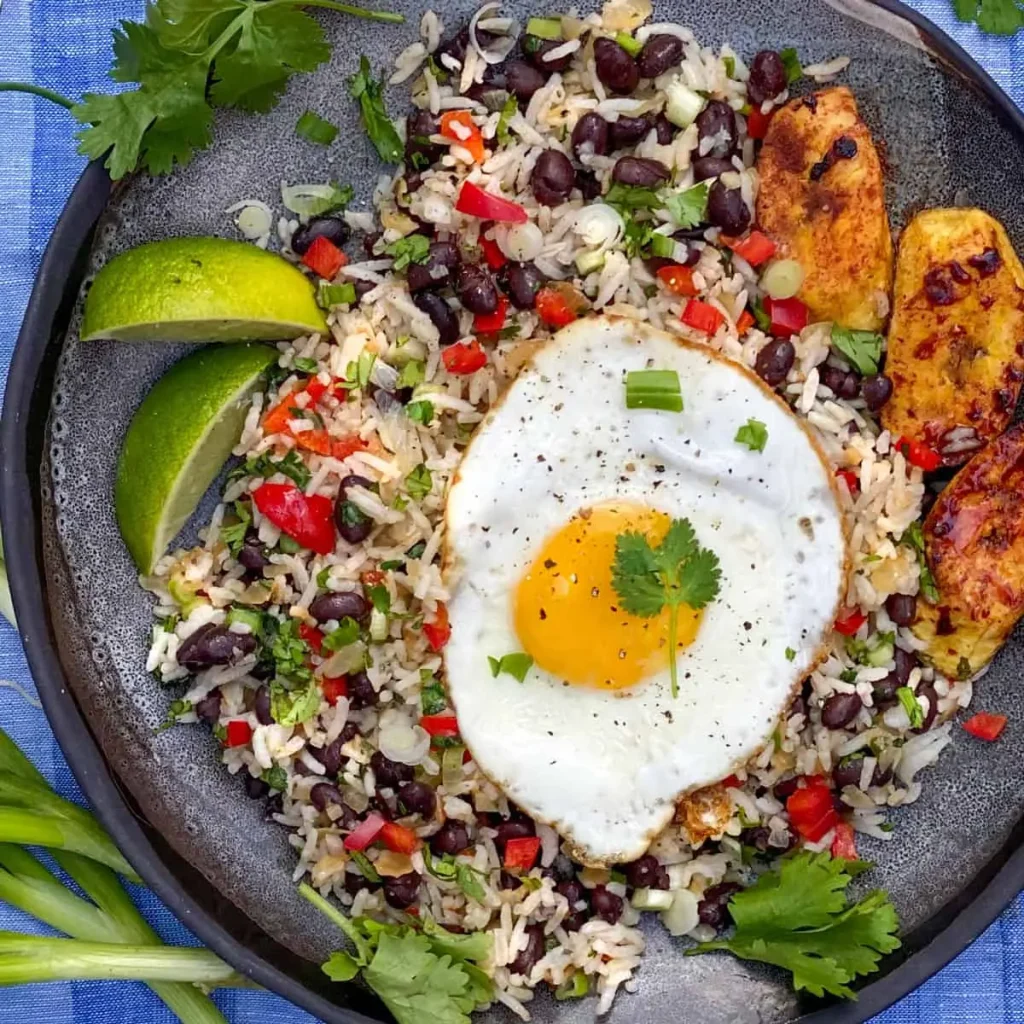
Gallo Pinto: Costa Rica’s National Dish
Costa Rica’s national dish, Gallo Pinto, is a flavourful and beloved staple made from a simple blend of ingredients. Typically served with eggs, platanos maduros (ripe plantains), natilla (sour cream), and tortillas, this dish offers a hearty and satisfying breakfast. No visit to Costa Rica is complete without tasting this iconic meal.
While the idea of having beans and rice for breakfast might seem unusual to some travellers, especially those not familiar with Latin American cuisine, Gallo Pinto is a must-try. Trust us—you won’t want to miss it.
The Story Behind Gallo Pinto
The origins of Gallo Pinto are indeed intriguing. Firstly, the name translates to “spotted rooster,” likely referencing the black beans scattered through the white rice, resembling a rooster’s speckled feathers. However, there’s an even more colorful tale associated with its history.
Many years ago, in the Costa Rican mountains, a farmer planned a feast for his friends and family, featuring his prized rooster. As word of the meal spread, more villagers arrived than anticipated. Consequently, realizing that one rooster wouldn’t be enough, the farmer hastily prepared some leftover rice and black beans, seasoning them with spices from his pantry to ensure there was enough food for everyone.
Ironically, many of the guests never got to taste the rooster and instead enjoyed the rice and beans. From then on, whenever the villagers ate this dish, they would jokingly ask, “How was your Gallo Pinto?” The phrase caught on, and today, Gallo Pinto remains synonymous with one of Costa Rica’s best-loved breakfasts.
Costa Rican Gallo Pinto Ingredients & Recipe
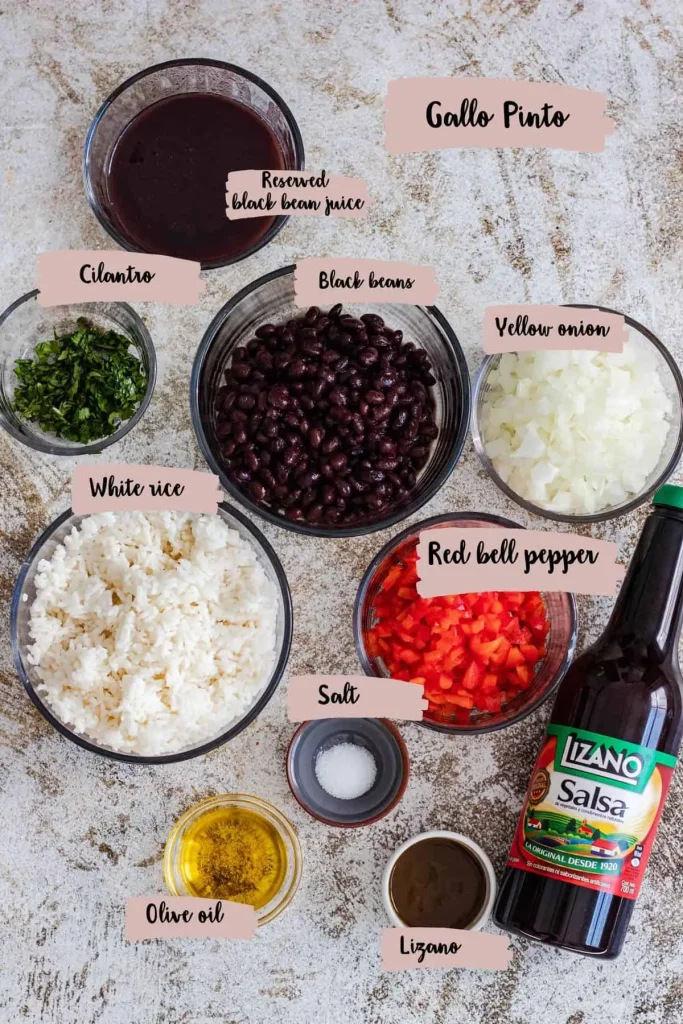
Ingredients
- 3 cups day-old, cooked white rice
- 3-4 cups black beans, cooked (1 cup liquid reserved)
- 1 medium onion, finely chopped
- 1 sweet pepper, finely chopped
- 1 cup chopped cilantro, loosely packed
- 1 tablespoon complete seasoning
- 2-3 tablespoons Salsa Lizano
- 1 tablespoon olive oil
Process
- In a large pan or skillet on medium-high heat, sauté the onion and pepper with olive oil until cooked.
- Add the beans, complete seasoning, and Salsa Lizano. Cook until beans are warmed through and flavourful.
- Add the rice and mix everything together. Fry the gallo pinto until all of the flavours are incorporated, about 5 minutes.
- Turn off the heat, and add the cilantro.
- Serve with scrambled eggs, plátanos maduros, fresh fruit, and enjoy!
Plantains
Alongside many Costa Rican dishes are plantains (in one form or another!). The same family as the banana, but don’t get these two confused, plantains are starchy, they have a much thicker skin, and they need to be cooked before being consumed. Versatile and delicious, and once you know how to prepare plantains, they could easily become a staple in your kitchen. Two of the more traditional Costa Rican recipes are patacones and plátanos maduros.
Patacones are made with unripe, green plantains and are often served as an appetizer in restaurants. In other parts of Latin America, they are sometimes called tostones. They are twice-fried, smushed into disks, and served with refried black beans, chimichurri (also known as salsa fresca or pico de gallo), and queso.
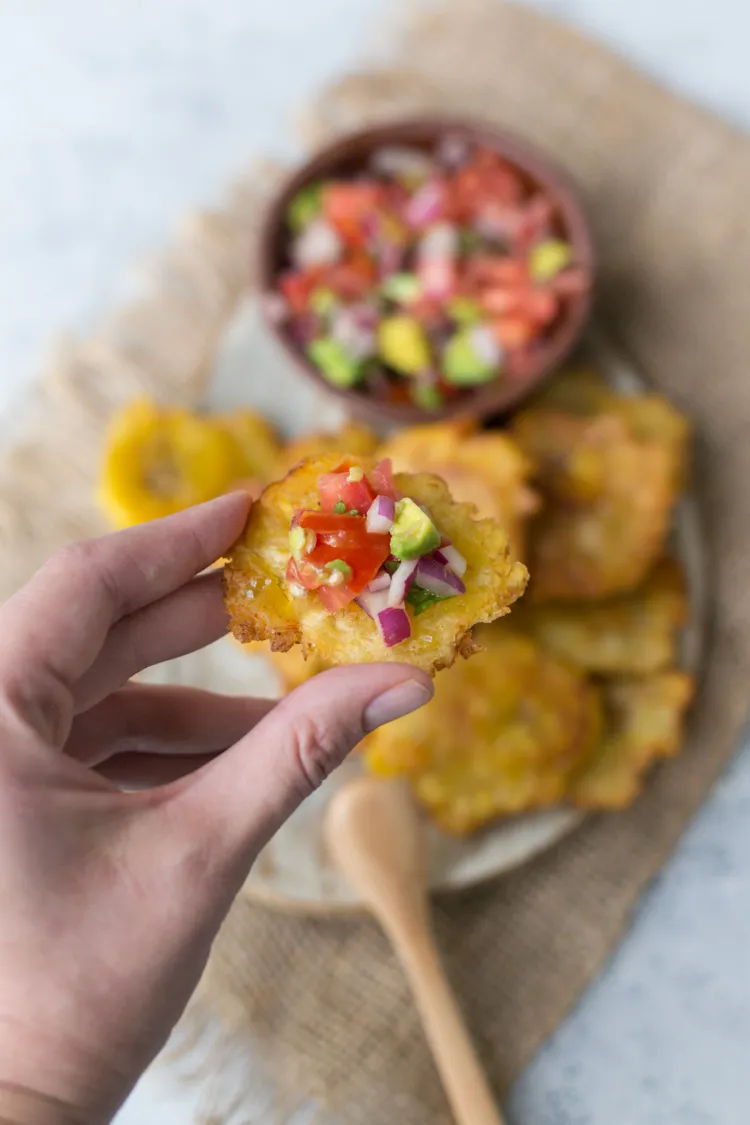
Conclusion
Costa Rica’s soda restaurants are a treasure trove of authentic culinary delights. They offer a unique and affordable way to experience the country’s rich food culture while supporting local economies. When staying at Vayu Retreat Villas, make sure to take some time to explore these charming eateries. It’s a nice break from the exquisite meals at Vayu and a chance to dive deeper into the local traditions.
Have you visited a soda restaurant in Costa Rica? What was your favourite dish? Share your experiences and tips in the comments below!


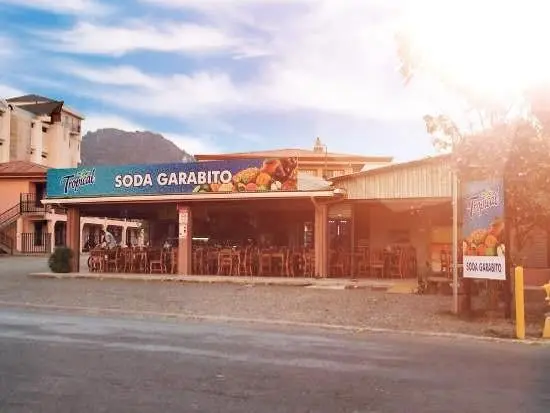



Pingback: Food for Thought (and Travel): The Flavors of Uvitas Restaurants